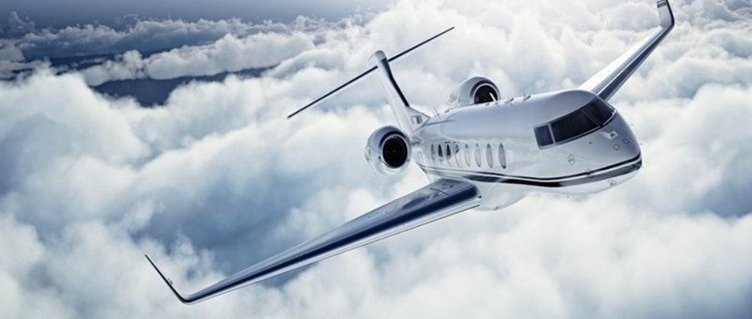Brian Foley: Private aviation’s sudden popularity falls back to Earth

Fuelled since 2020 by soaring personal stock portfolios, easy access to low-interest cash and a pandemic-induced desire to avoid public airport cattle stalls, interest in flying privately has soared. However, recent metrics now suggest the white-hot market has begun to cool to a more manageable and sustainable level. Words by Brian Foley.
Shortly after the pandemic was declared, first-time users of private aircraft began to flock to the easiest access to personal flights — charter and fractional aircraft providers. These business models allow instant access to a fleet of planes without the hassle of buying and maintaining one. Some charter providers reported upwards of 50% of their business being booked by new clients who had never flown privately before.
The sudden rush of new customers made servicing these trip requests challenging for a finite network in a niche, capital-intensive industry sized for much lower utilisation. A few providers such as Berkshire Hathaway’s NetJets division were even forced to suspend further new charter sales just so they could provide an adequate service level to their existing clients.
Buying a used aircraft was another way for newcomers with the resources and commitment to take to the skies on their own terms. This trend proved so popular as to empty the supply of used aircraft on the market to all-time lows. This predictably caused prices to surge as it promptly became a seller’s market, often leaving only the choice of older, overpriced, ugly duckling jets with a laundry list of expensive maintenance requirements.
This frustration led some first-time buyers to the most expensive solution of them all — buying a brand-new plane. Just as the charter, fractional and pre-owned markets were inundated, so too had the manufacturers’ order books begin to swell. In 2021 Textron Aviation, maker of such private aircraft as the Cessna Citation business jet and King Air turboprop, reported that 20% of their customers were new to ownership. This sudden surge in interest caused the next-available buyer delivery slots to extend out to the 2025 timeframe and beyond at some manufacturers.
As with any extreme swings from market norms, these exceptional times weren’t to last forever. Early signs of the froth receding a bit — not catastrophically but in a manner that relieves an overworked market — have begun to appear.
The catalysts for this change have come in the forms of sagging stock and bond markets, inflation, rising interest rates, reduced virus anxiety and the looming threat of a recession. Flyers may not feel as rich or secure as they had been, and being a discretionary spend, cutting back or eliminating the relatively costly private flying expense is one way to shore up the finances at least mentally. With no strings attached when leaving charter, many business aircraft newbies have opted to go back to their economy plus airline seats.
As proof of this exodus, WINGX reports that branded charter activity in North America is now down 23% compared with year-ago levels and is even 5% below the pre-pandemic levels of 2019. Part of the reason for the quick turnaround is the ease at which one can decide whether to charter. It would appear that many of those first-time users were only interested in a one-time trip and were financially humbled by the $20,000 one-way ticket from New York to Palm Beach.
On the pre-owned aircraft side, the level of inventory has doubled in just the past six months according to AMSTAT. While still near historical lows, the availability of used jets is still well below traditional levels but with a noticeable upward change. Similarly, an industry that had seen some used airplane model prices spike by 80% or more are now seeing modest price decreases across the board. Inventory is expected to keep increasing after some of the newly minted used airplane owners get schooled in yearly maintenance and operating costs which can be many multiples of the sales price.
After a string of record-setting years, the association for the preowned aircraft market IADA reported a 6% decrease in sales transactions year-to-date through the third quarter in 2022 compared with the same period in 2021. Further decreases are likely to be in store as the 100% accelerated US tax depreciation benefit decreases to 80% in 2023 and even less beyond making the ownership proposition less compelling to certain buyers.
New business jet makers have been seeing the recent downshift as well, as book-to-bill ratios, a measure of sales activity, declined somewhat. Despite this, backlogs have already swelled to multi-year highs, equivalent to a couple of years’ production. Benefitting are such OEMs as Dassault, Bombardier, Gulfstream, Embraer and Textron’s aviation division.
The reduction in charter activity coupled with fewer new and preowned aircraft sales indicates the peak has passed for the general public’s discovery and fascination with private aviation. This is frankly a relief for an industry that was never scaled to be a mass transit system and has been overwhelmed over the past couple of years.
The shift won’t come without some longer-term risks. Fractional providers, having been unable to meet the surge in demand for their charter programs, placed massive new airplane fleet orders with manufacturers. The stickiness of these orders remains to be seen as aviation newcomers become fewer and farther between. Another crack that could appear are for those charter/fractional companies that depend heavily on client growth to make their numbers or satisfy investors.
Regardless, my estimate is that less than 10% of those new to general aviation will remain in the fold, which still favorably raises the baseline obtainable market for the industry from this point forward. It took nothing less than a pandemic to finally shake this low-hanging fruit from the tree.








